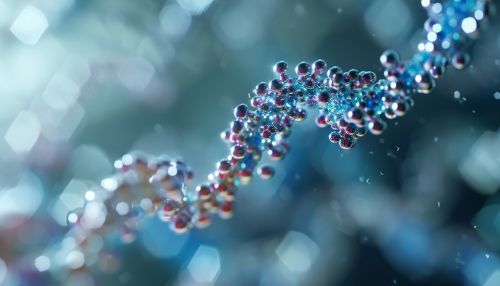Guanine nucleotide-binding proteins
Introduction
Guanine nucleotide-binding proteins (G proteins) are a family of proteins involved in transmitting chemical signals outside the cell, and causing changes inside the cell. They communicate signals from a variety of stimuli outside a cell to its interior. G proteins are so called because they bind the guanine nucleotides GDP and GTP.


Structure
G proteins are made up of three subunits: alpha (α), beta (β), and gamma (γ). The alpha subunit binds the guanine nucleotide. In its inactive state, it binds GDP; when it is activated by a signal receptor, it exchanges GDP for GTP. The beta and gamma subunits are tightly bound to each other and are referred to as the beta-gamma complex.
Function
G proteins are involved in a variety of cellular processes, including cell differentiation, cell division, and regulation of metabolism. They function as molecular switches, cycling between an inactive GDP-bound state and an active GTP-bound state. This cycle is regulated by guanine nucleotide exchange factors (GEFs), which promote the release of GDP and binding of GTP, and GTPase-activating proteins (GAPs), which catalyze the hydrolysis of GTP to GDP.
Types of G proteins
There are several types of G proteins, classified based on their alpha subunit. These include Gs (stimulatory), Gi (inhibitory), and Gq. Each type is activated by different receptors and has different effects on the cell.
Gs proteins
Gs proteins are activated by receptors such as the beta-adrenergic receptor. When activated, they stimulate the production of cAMP by activating the enzyme adenylyl cyclase. cAMP acts as a second messenger, initiating a series of events that lead to the cellular response.
Gi proteins
Gi proteins are activated by receptors such as the muscarinic acetylcholine receptor. When activated, they inhibit the production of cAMP by inhibiting adenylyl cyclase. They also activate certain types of ion channels, and can activate the mitogen-activated protein kinase (MAPK) pathway, which is involved in cell growth and differentiation.
Gq proteins
Gq proteins are activated by receptors such as the alpha-1 adrenergic receptor. When activated, they stimulate the production of inositol trisphosphate (IP3) and diacylglycerol (DAG) by activating the enzyme phospholipase C. IP3 and DAG act as second messengers, initiating a series of events that lead to the cellular response.
Role in disease
Abnormalities in G protein function can lead to a variety of diseases. For example, mutations in the gene encoding the alpha subunit of the Gs protein can lead to diseases such as McCune–Albright syndrome and Pseudohypoparathyroidism. Mutations in the gene encoding the beta subunit of the G protein can lead to diseases such as Retinitis pigmentosa.
